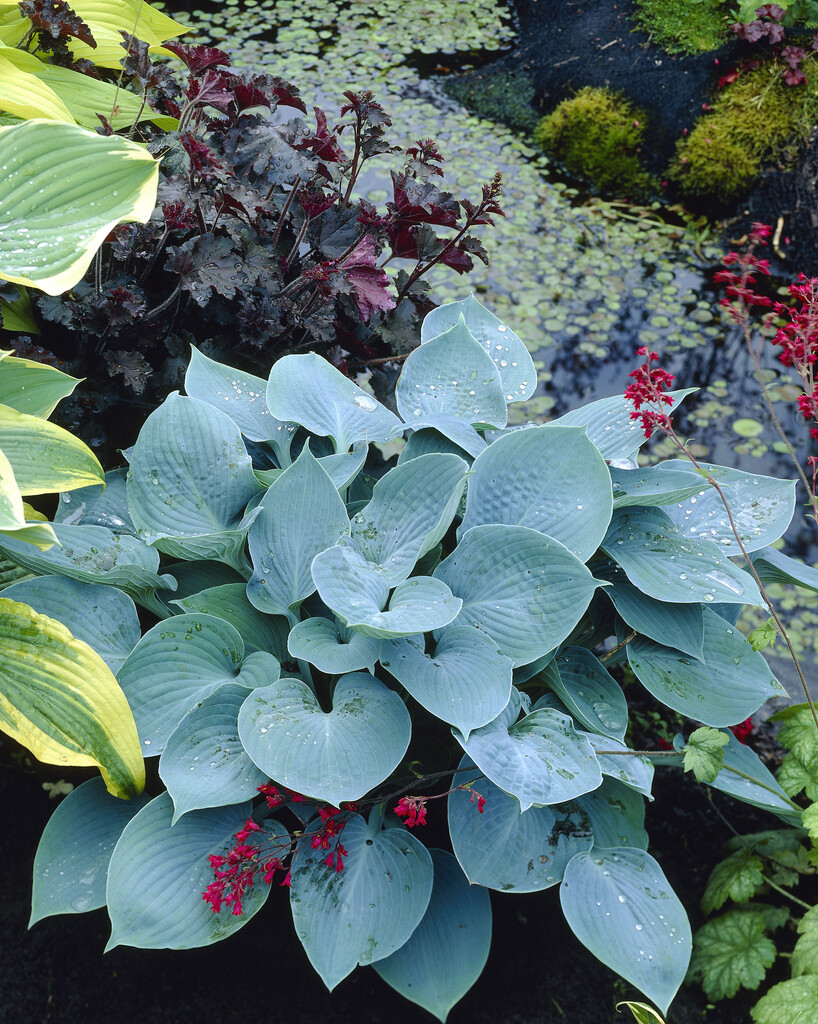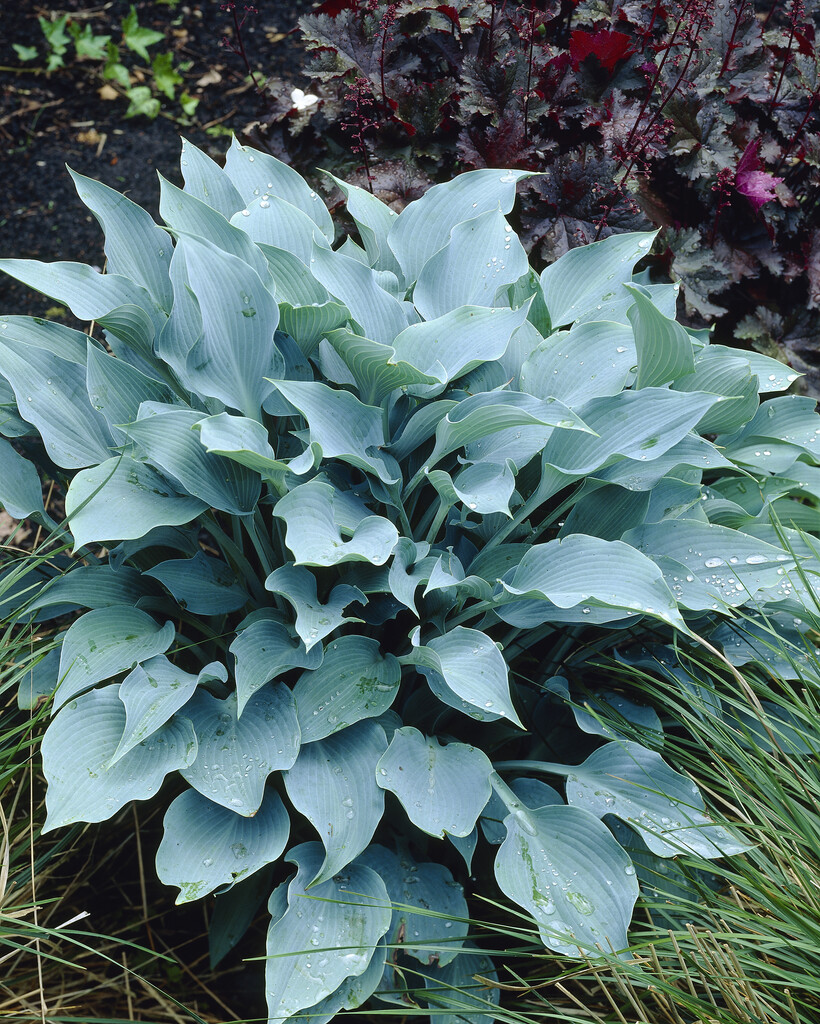Hosta (Tardiana Group) 'Hadspen Blue'
plantain lily 'Hadspen Blue'
A small, slow-growing, clump-forming perennial to 25cm high, with thick, textured, ovate to heart-shaped leaves with a silvery-blue waxy sheen. Produces loose clusters of bell-shaped pale purple flowers on upright stems in summer
Size
Ultimate height
0.1–0.5 metresTime to ultimate height
2–5 yearsUltimate spread
0.5–1 metresGrowing conditions
Moisture
Moist but well–drainedpH
Acid, Alkaline, NeutralColour & scent
| Stem | Flower | Foliage | Fruit | |
| Spring | Green Blue Grey Silver | |||
|---|---|---|---|---|
| Summer | Purple | Green Blue Grey Silver | ||
| Autumn | Green Blue Grey Silver | |||
| Winter |
Position
- Full shade
- Partial shade
Aspect
North–facing or East–facing
Exposure
Sheltered Hardiness
H7Botanical details
- Family
- Asparagaceae
- Native to GB / Ireland
- No
- Foliage
- Deciduous
- Habit
- Clump forming
- Genus
Hosta are clump-forming herbaceous perennials with simple, ovate or lance-shaped leaves, often attractively coloured or variegated, and erect racemes of nodding, funnel or bell-shaped flowers in early summer
- Name status
Accepted
How to grow
Cultivation
Grow in a shady spot in fertile soil that does not dry out, with shelter from cold, drying winds. Mulch annually in spring. Hostas in the ground may need watering during dry spells. See hosta cultivation for more detailed advice
Propagation
Propagate by division in early spring or late summer
Suggested planting locations and garden types
- City and courtyard gardens
- Cottage and informal garden
- Patio and container plants
- Flower borders and beds
- Ground cover
- Underplanting of roses and shrubs
Pruning
No pruning required
Pests
May be susceptible to slugs and snails; container grown plants may be susceptible to vine weevil
Diseases
May be susceptible to virus diseases
Love gardening
Sign up to receive regular gardening tips, inspiration, offers and more
View our Privacy Policy
Get involved
The Royal Horticultural Society is the UK’s leading gardening charity. We aim to enrich everyone’s life through plants, and make the UK a greener and more beautiful place.

